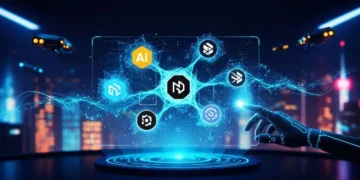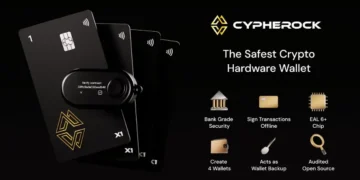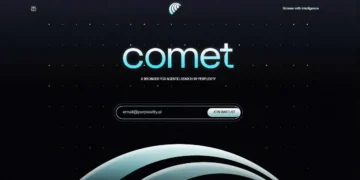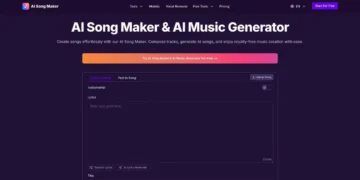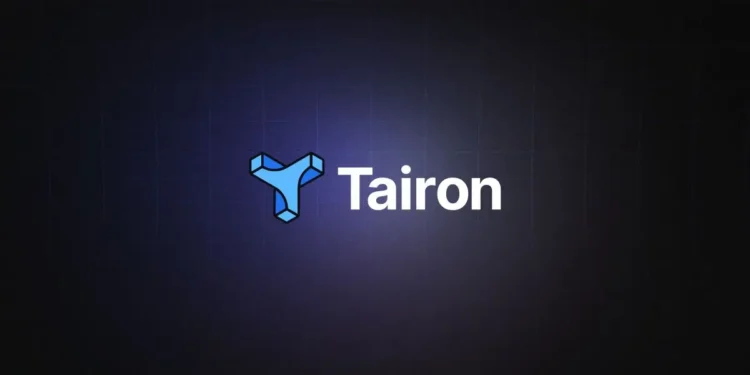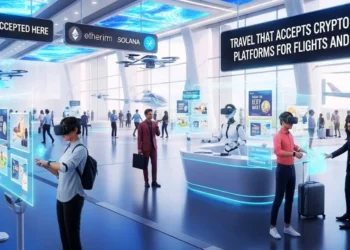Imagine a world where decentralized data from blockchains like Ethereum and Polygon seamlessly integrates with artificial intelligence, enabling real-time decision-making for developers and autonomous systems. Yet, today, Web3 and AI remain largely disconnected due to fragmented APIs, siloed data, and the absence of a standardized protocol. This disconnect stifles innovation and limits the potential of AI-driven applications in the blockchain space.
Enter Tairon, a groundbreaking solution designed to bridge this gap. On September 2nd, 2025, Tairon launched the MCP Supergraph, the first on-chain registry and protocol that standardizes connections between decentralized data and AI systems. This article delves into how Tairon’s MCP Supergraph is revolutionizing the way developers and AI systems interact with Web3 data, making it machine-readable, accessible, and actionable at scale.
What Is Tairon and the MCP Supergraph?
Understanding the Model Context Protocol (MCP)
The Model Context Protocol (MCP) is a standardized framework that enables applications to interact with external services via a minimal HTTP API. It defines how servers expose structured, callable functionality that client applications can discover and consume. Core components of MCP include:
Endpoints: Standardized HTTP routes like
/healthand/execute.Functions: Named operations with defined input/output schemas.
Schemas: JSON schemas for type-safe interactions.
Metadata: Server information and capability descriptions.
Tairon’s Role in the MCP Ecosystem
Tairon operates as the onchain MCP Supergraph, bringing every on-chain data source to AI. It provides a unified platform for developers to discover, test, and integrate MCP-compatible servers across Web3 and traditional applications. Key features of Tairon include:
A registry of thousands of verified MCP servers.
Live Inspector for real-time endpoint testing.
Comprehensive security audits and compliance checks.
Performance monitoring and uptime tracking.
The Problem: Fragmented Data in Web3 and AI
The Rise of Decentralized Data
The growth of Web3 and AI has led to massive stores of decentralized data. However, there is no standardized way to securely connect these datasets across multiple chains. This fragmentation results in:
Siloed and inaccessible data for developers and AI systems.
Inability of LLMs and agents to reason over Web3 data in real time.
Lack of verifiable access standards, slowing down innovation.
The Bottleneck for AI in Blockchain
As Web3 integration accelerates, the lack of real-time data access has become a major barrier for AI. Emerging projects struggle to leverage AI solutions due to:
Undocumented APIs and fragile integrations.
Limited scalability across chains.
Absence of machine-readable data formats.
How Tairon’s MCP Supergraph Solves These Challenges
Unified On-Chain Registry
Tairon’s MCP Supergraph provides an on-chain registry for publishing and versioning MCP servers. This enables:
Standardized discovery of servers across ecosystems.
Verifiable access to decentralized data.
Seamless integration for developers and AI systems.
AI-Native Design
The MCP Supergraph is built for LLMs, agents, and applications to query, reason, and act on decentralized data in real time. Its AI-native design includes:
Open protocol support (HTTP, WebSocket, GraphQL).
Machine-readable data formatting (JSON, Protocol Buffers).
Real-time testing capabilities via Live Inspector.
Developer-Friendly Tooling
Tairon offers a suite of tools to simplify server management:
Dashboard and CLI for lifecycle management.
SDKs and documentation for easy integration.
Code generation for popular programming languages.
Key Features of the MCP Supergraph
Registry and Server Discovery
Tairon’s registry categorizes MCP servers for easy discovery:
Chain-RPC for blockchain connectivity.
DeFi and Trading servers for financial data.
Social and Market Data for analytics.
Developer Tools for testing and validation.
Security and Compliance
Every server undergoes rigorous checks:
Security audits (passed/pending/failed status).
Authentication methods (API keys, OAuth 2.0, JWT).
Uptime metrics (99.9% availability).
Transport Layer Support
The Supergraph supports multiple transport layers:
HTTP/REST for standard API interactions.
WebSocket for real-time data streams.
On-Chain protocols for smart contract interactions.
Real-World Applications and Use Cases
DeFi and Trading
MCP servers like Aave-MCP and Uniswap-Trader-MCP enable AI agents to:
Execute token swaps on decentralized exchanges.
Monitor liquidity pools and yield farming opportunities.
Provide real-time price forecasts.
Cross-Chain Analytics
Servers such as TheGraph-MCP and EVM-MCP-Server allow:
Querying indexed blockchain data across chains.
Generating insights for decentralized applications.
Enhancing AI-driven analytics tools.
Smart Contract Interactions
With on-chain servers, developers can:
Call smart contract functions directly.
Verify transactions and ownership.
Build autonomous agents for Web3 operations.
Tairon’s Roadmap and Future Goals
Current Integrations
Tairon already supports nearly 100 protocols, including:
Ethereum, Polygon, and Arbitrum.
DeFi protocols like Aave and Uniswap.
Oracle networks for real-time data feeds.
Expansion Plans
By 2026, Tairon aims to:
Achieve 300 integrations by end-2025.
Reach 1,000 integrations by mid-2026.
Expand into Layer 2 solutions and emerging chains.
Why Developers Should Adopt Tairon
Simplified Integration
Tairon removes the need for manual endpoint integrations. Developers can:
Discover servers via a unified registry.
Test endpoints in real time.
Generate code snippets for fast implementation.
Enhanced Security
With comprehensive security checks, Tairon ensures:
Verified servers with audited code.
Secure authentication methods.
Reliable uptime and performance.
Community-Driven Innovation
Tairon’s open platform encourages:
Transparent governance via the $TAIRO token.
Collaborative development across the Web3 ecosystem.
Scalable solutions for AI and blockchain integration 2.
FAQs
What Is the Model Context Protocol (MCP)?
The Model Context Protocol (MCP) is a standardized protocol that enables applications to interact with external services through a minimal HTTP API. It defines how servers expose callable functionality for client applications.
How Does Tairon Improve Web3 and AI Integration?
Tairon’s MCP Supergraph provides a unified registry for MCP servers, enabling developers and AI systems to access decentralized data in a standardized, secure, and scalable manner.
What Chains Does Tairon Support?
Tairon currently supports nearly 100 protocols, including Ethereum, Polygon, and Arbitrum. It aims to reach 300 integrations by end-2025 and 1,000 by mid-2026.
Is Tairon Secure for Enterprise Use?
Yes. Tairon conducts comprehensive security audits on all servers and ensures compliance with industry standards. Its authentication methods include API keys, OAuth 2.0, and JWT tokens.
How Can Developers Get Started with Tairon?
Developers can explore the Tairon registry, use the Live Inspector for testing, and access SDKs and documentation on the Tairon Docs website.
Conclusion
Tairon’s MCP Supergraph represents a paradigm shift in how Web3 and AI systems interact. By standardizing access to decentralized data, Tairon empowers developers to build innovative AI-driven applications that were previously impossible due to fragmented infrastructure. As the platform expands to include more chains and protocols, its impact on the blockchain and AI landscapes will only grow.
Ready to explore the future of Web3 and AI integration? Visit Tairon’s registry today and start building with verified MCP servers. Share this article with your network to spread the word about the next evolution in decentralized data access!

